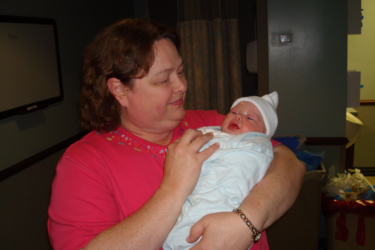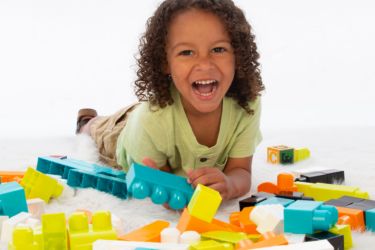
Is It Terrible Twos or Just Terrible Behavior?
Most parents know this scene all too well. One moment, you and your toddler are successfully navigating the aisles of the grocery store. Everyone’s happy. Everything’s fine. Until it’s not. Suddenly, your little angel is sprawled on the floor red faced and screaming in an all-out temper tantrum. You feel as if all eyes are on you, and they probably are. If you’re lucky, you’ll get a comforting smile from that knowing mom who has been there before. We all know this scene, but how do you know if this is a classic example of the terrible twos or something more?
Tantrums and Terrible Twos
One important thing to note is that the terrible twos could come before or after age two. According to Licensed Professional Counselor Courtney Sykes Hesterly, “It’s less of an age and more of a developmental stage.” Whether it begins at 18 months or two to three years old, at some point, your children will go through a phase where they are experiencing intellectual, physical, social, and emotional changes all at once. During this time, they are also struggling between the need to cling to their parents for comfort and security, and their newfound desire to explore their independence and let go.
Dr. Maryelizabeth LeBoeuf, a local psychologist, says while this is happening, “Their language skills are developing, and oftentimes, their understanding of language (receptive language) may be ahead of what they are able to say or express (expressive language).” This is when you may see a temper tantrum because your children may not be able to articulate when they are tired or overstimulated.
Gonzales mom Shannon Dirmann has experienced this firsthand with her son. “With my son, one minute we are laughing and talking about the colors of the trees and the sky, and the next, he is in a ball on the floor because I gave him the wrong colored cup! But, it’s worth every minute. It helps me to understand that I am raising him for the long haul, and how I react to him teaches him how to react to life’s circumstances. Enduring the second year is one of the biggest parenting challenges I have faced, but it is also the best one, too.”
The best way to handle a temper tantrum is to have a plan before it happens. Be consistent in your response, whether you are at home or in public. Try to redirect your children or distract them with something unrelated to whatever triggered their tantrum. If redirection doesn’t work, it’s best to ignore the behavior. Dr. LeBoeuf advises to avoid the “escalation trap” with toddlers. If a parent overreacts or yells, then the parent gets upset, which leads to the child becoming more upset, and the situation quickly escalates.
Prairieville mom Amanda Higgins, whose daughter is currently going through the terrible twos, tells parents to try not to worry. “I know with my daughter this isn’t a permanent thing because the behavior isn’t consistent. The terrible twos are just a phase as she is testing her boundaries, so I try not to get too concerned,” she says.
Taking it Beyond Terrible Twos
Still, parents may worry that this behavior will lead to continual aggressive behavior and constant fighting or defiance. Sometimes, it is more than just the terrible twos. Dr. LeBoeuf says, “Look for patterns. An occasional temper tantrum is developmentally normal, but if you see an increase in frequency of tantrums and they are occurring daily, and or multiple times per day, there may be cause for concern.” Dr. LeBoeuf says that other signs to look for can include behavior that is physically aggressive towards other children or adults, behavior that is self-injurious like head banging, biting, or scratching themselves, or very frequent tantrums (daily and multiple times a day without being soothed). These are all cause for concern.
In addition to these physical manifestations, your child may show some warning signs through their emotional behaviors. Sykes Hesterly says, “During this developmental phase, you may see signs of early callous unemotional behaviors (CU Behaviors). These behaviors include lack of empathy, lying, punishment insensitivity, and lack of emotional responsivity.” Should you notice any of these signs, seek professional help. Sykes Hesterly recommends seeing a pediatrician or mental health professional who can assist in assessing, diagnosing, and treating your child. Positive outcomes can still be achieved with early intervention and parental education.
While this particular developmental phase might seem like one of your most challenging ones, keep in mind that in most cases, it is still just a phase. It might be hard to see the beauty of it when you’re in the midst of it, but with every defiant stance, every hissy fit, every tearful outburst, your child is moving one step closer to becoming the person he or she is meant to be. ■





